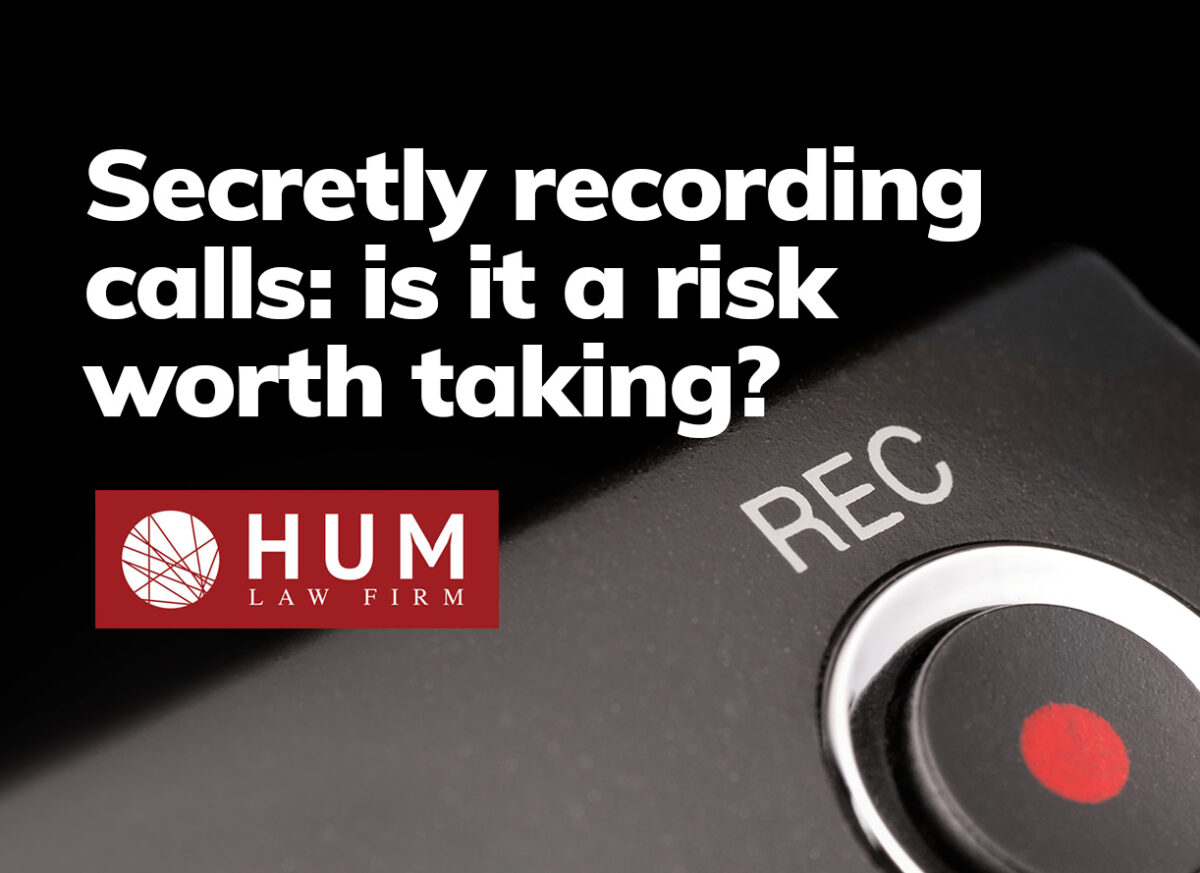Recently, a 10-minute TikTok video about a termination meeting went viral online. A woman secretly recorded a meeting during which she was fired from her job and then shared that recording on the Internet. In the video, she could be seen calmly defending herself, but she could not change the employer’s decision. She submitted her recording to the court of public opinion, and the public sided with her, applauding her demeanour during the meeting. Even the CEO of her employer admitted that the situation could have been handled better. However, what impact can a secret recording have for employees in a court of law?
Most people in Canada know it is generally not illegal to record a conversation if you are taking part in it. But – do secret recordings at work put you at risk of an employer relying on them to terminate for cause? Not surprisingly, the answer depends on the circumstances.
What Case Law Says
In Shalagin v. Mercer Celgar Limited Partnership, 2022 BCSC 112 (“Shalagin”, affirmed by the BC court of appeal, 2023 BCCA 373), an accountant employed by an accounting firm sued for wrongful dismissal. The employee had been terminated without cause, after having had a dispute with his manager over the calculation of bonus pay, during which he implied that he would sue the employer if the issue was not resolved. The employer, believing that the trust between employer and employee had been broken, decided to terminate his employment without cause. The employee subsequently filed three claims against the employer: an Employment Standards complaint, a human rights complaint, and a wrongful dismissal lawsuit.
During the court proceeding, the employee disclosed that he had secretly recorded over one hundred conversations at the workplace. The employee argued that the recordings were made to protect himself and gather evidence related to discrimination, financial improprieties, improper calculation of his bonus, and other reasons. However, upon learning of the secret recordings, the employer changed its position, asserting that it could terminate the employee for cause due to these recordings, thereby denying the employee’s wrongful dismissal claim altogether.
At trial, these secret recordings worked entirely against the employee. The judge found that, although the employee did not act maliciously and did not publish the recordings or seek to use them outside the ongoing legal proceedings, these secret recordings nevertheless gave the employer cause to terminate him. The court determined that the recordings were unethical, unnecessary, excessive, or ill-founded and broke the trust between the employer and the employee. As a result, the employee was denied the wrongful dismissal damages he would have otherwise been entitled to, amounting to approximately $100,000.
As for the employee’s case pending before Ontario’s Human Rights Tribunal, it will be interesting to see how the secret recordings are considered. The recordings provided the employer with the basis for its termination for cause defence in the wrongful dismissal court case based on breach of confidence and trust in the employer/employee relationship. However, on the question of whether the employer breached this employee’s human rights, different considerations apply. It could well be that the secret recordings may be both admissible as evidence and also provide evidence that his human rights have been breached, as was the case in Ardila-Zuluaga v. IO Industries Inc., 2021 HRTO 1042 at paragraphs 7 – 15, and 203 – 212. However, as the court commented, secret recordings are not guaranteed to be admitted as evidence. They should be treated with caution as the recorded conversations could be out of context or staged by the recorder.
Whether secret recordings can lead to termination for cause should be assessed in the light of the surrounding circumstances and be proportional. Shalagin is an extreme example. The employee made over one hundred secret recordings over 10 years of his employment; the recordings covered irrelevant information and breached other employees’ privacy, and the reasons for making these recordings were speculative.
The case of Shalagin can be contrasted with two cases where secret recordings were helpful to an employee’s case. For instance, in Familiar Transmissions Ltd. (Re), 2019 BCEST 125, the employee secretly recorded a meeting with his supervisor regarding their disputes over regular wages, overtime, statutory holiday pay, annual vacation pay, and vacation pay. A delegate of the Director of Employment Standards determined that the purpose of the recording was solely to corroborate the employee’s claim for wages, and not intended to embarrass or otherwise discredit the employer. As such, the employee’s act of recording was not inconsistent with continued employment, and it did not constitute serious misconduct.
Further, in Teljeur v. Aurora Hotel Group, 2023 ONSC 1324 (“Teljeur”), the employee secretly recorded his termination meeting. The court relied on this recording, among other things, to find the employer’s actions were “untruthful, misleading, or unduly insensitive,” constituting a breach of their duty of good faith and fair dealing in the manner of the employee’s dismissal. Consequently, the court awarded $15,000 in moral damages against the employer.
As highlighted in these two cases, discrete recordings made to protect an employee’s employment standards rights or to catch an employer lying might be an acceptable means of obtaining evidence. However, secret recordings also come with significant risks, as the employer could use them to justify a termination for cause for breach of trust. Employees should exercise caution and seek legal advice beforehand if they consider recording conversations secretly.
Alternatives to Secret Recording
Rather than run any risk of the employer claiming a breach of the trust, employees have risk-free ways of gathering evidence about workplace incidents, such as bullying, harassment, discrimination, etc.,. Options to consider are:
- Take contemporaneous notes, do a journal entry, or even simply send an email to yourself to easily have a record that includes evidence of date/time made;
- Note any witnesses present during an incident;
- Take note of any existing documentation (emails, letters, etc.), including video or audio surveillance recordings at work, that might be in the employer’s possession;
- If you suffer mental distress or other health issues due to the incidents, you can tell your doctor to put reasons on their medical records.
Key Takeaways for Employees
What do we learn from Shalagin? Had there been no secret recordings, the employee would likely have prevailed in the wrongful dismissal case. Employees are advised not to engage in secret recordings without first consulting with a legal professional.
That does not mean employees are out of options when it comes to preserving evidence. Alternative methods, such as journaling and documenting, can help them with reduced or no risks.
Therefore, employees should assess all their options first before considering using secret recordings to protect themselves at the workplace.
If you need guidance from an experienced employment lawyer, contact Hum Law today at (416)214-2329 or Complete our Free Assessment Form Here.


